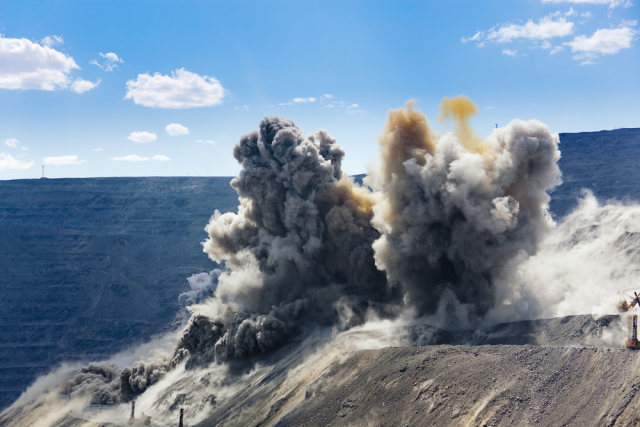The active introduction of explosive technologies for peaceful purposes began in the second half of the last century and continues at the present time. The energy of the explosion is used for laying channels, tunnels, roads, in construction and agriculture, for the development of deposits and mining. Today, Rostec enterprises produce explosives for the mining and construction industries.
We tell you about the most interesting "explosive" developments. Create by destroying
Professor Georgy Pokrovsky, an outstanding Soviet scientist in the field of explosion physics, wrote: "The energy of the explosion in the hands of the human creator becomes a productive force that should and will serve the creative goals of people." However, humanity did not immediately "tame" explosive energy for peaceful purposes. Gunpowder, the most famous explosive, appeared as a by−product in the creation of medicines in China sometime in the first millennium AD and almost immediately began to be used in the arms industry. It was only in 1548 that the first use of gunpowder for economic purposes was recorded – to clear the fairway of the Neman River.
Explosives based on gunpowder were actively used for mining operations in the 17th and 18th centuries, until more advanced substances appeared – nitrobenzene, nitronaphthalene, pyroxylin and, eventually, nitroglycerin, which revolutionized the explosive business. On its basis, the talented Alfred Nobel in 1867 developed dynamite, which until the middle of the 20th century remained the most popular explosive in industry and construction. He was replaced by TNT, which, however, is gradually falling out of use today due to its harmfulness. The search for more effective and safer explosives continues.
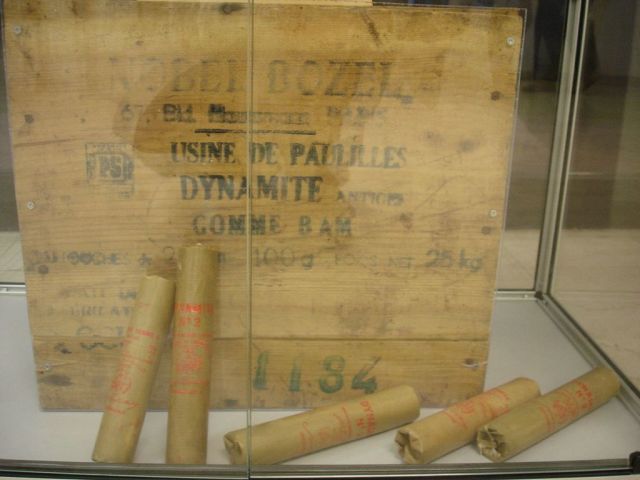
Dynamite produced by the Nobel factory. Photo: wikimedia.org Well-studied and controlled by man explosive processes have formed the basis of many technologies in various fields of activity. Along with the wheel, lever and other remarkable inventions, the peaceful explosion has become an important helper of humanity. With its help, tunnels, roads are laid, mineral deposits are developed, unnecessary buildings are destroyed. Explosives are used to tame nature – the forced descent of avalanches, the explosion of ice in high water, to cause rain or hail, as well as to extinguish fires. But modern technologies have gone even further, and explosive energy is now involved in such complex processes as welding, cutting, hardening of materials and even obtaining diamonds.
Explosives that harden metal
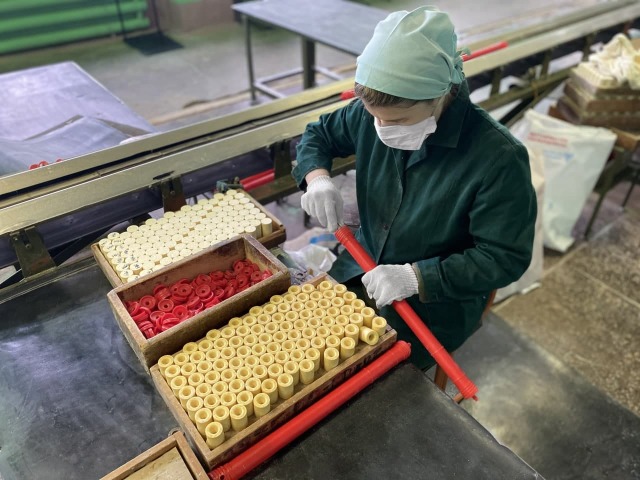
Industrial explosives intended for seismic and other geological work have been manufactured at the Novosibirsk Artificial Fiber Plant (JSC "NZIV") since 1994. The plant's capacity is designed for 1,100 tons of products per year, and in 2021, NZIV sold industrial explosives for 180 million rubles. The company conducts a full cycle: from the development, testing and direct production of new products to the disposal of explosives.
Here they produce checkers for blasting in wells, TNT charges for seismic exploration. And at the end of 2021, the NZIV proposed a novelty − the LVV-34-1 ribbon charge, with which metals are strengthened. Specifically, this charge is used to give new characteristics to the crosses of switches on railways. This element, which ensures the passage of the wheels of the rolling stock at the intersection of the tracks, is subjected to heavy loads and must work clearly in any conditions. To strengthen the crosspieces, they are subjected to explosive action, which makes the metal more wear-resistant and increases the resource of the element.
Nanodiamonds from recyclable materials
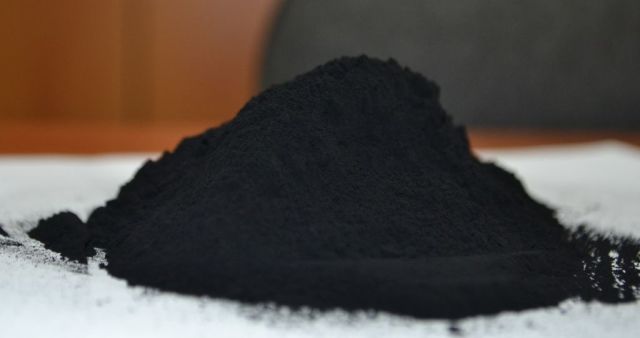
Nanodiamond charge. Photo: Plastics Plant
The Plastics plant in the city of Kopeysk, Chelyabinsk region, manufactures detonator checkers for the mining industry, which include TNT and recycled gunpowder. The PT-900L and PT-600L detonator checkers are used in mining as an intermediate detonator for initiating borehole and other charges of low-sensitivity industrial explosives. The checker can be used at temperatures from -50 to +50 ° C, it can also be in the water for more than six days, preserving its properties.
Another unique product of the Plastics plant is the diamond charge. It is obtained by blasting in ice shells – the charge is immersed in an ice shell, and then placed in the cavity of the blast chamber. After the explosion, diamond mud or charge is obtained, from which 8-10% of nanodiamonds can be extracted.
Explosive wave exploration
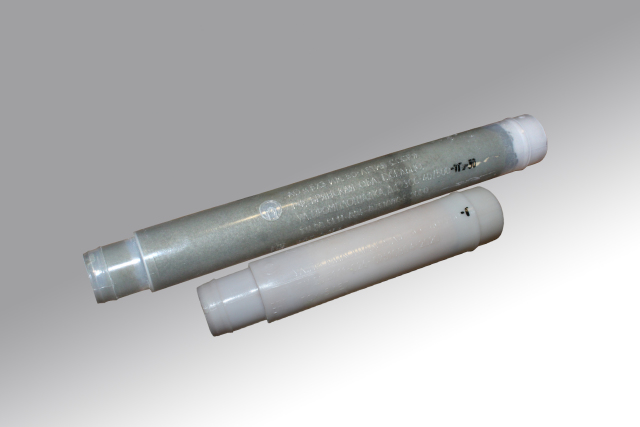
The main products of the Bryansk Chemical Plant named after The 50th anniversary of the USSR are seismic charges that are used in seismic exploration. To study the structure and condition of the earth's interior, seismologists use explosions. The blast wave, passing through rocks, transmits information, which is then collected by seismic receivers. Seismic charges are used to create this wave.
This year BHZ named after the 50th anniversary of the USSR presented a novelty − seismic charges of reduced diameter ZSS-30/250 and ZSS-30/400. The benefit from their use is that seismologists can use small–sized drilling equipment with a smaller diameter - from 30 mm for exploration. Charges can be used both separately and in the form of a garland, which allows an explosion of the required power. Bryansk charges operate at temperatures from -50 to +50 ° C and retain their functions even after three days in the water.
Fire explosion
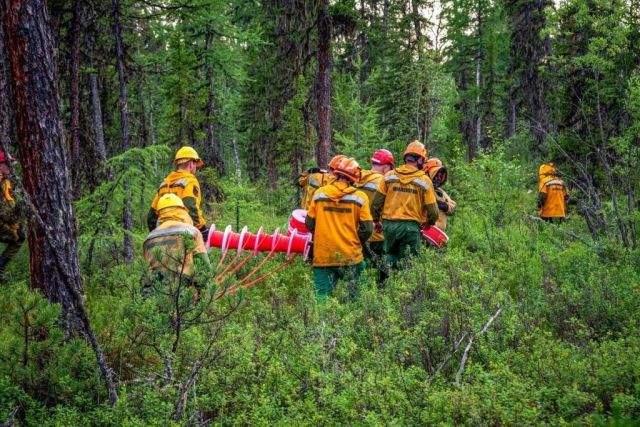
Photo: FBU "Avialesookhrana"
Novosibirsk Mechanical Plant "Iskra" specializes in the production of devices used to initiate explosions.
For example, a detonating cord is a product consisting of a shell and a core filled with an explosive substance. Most often it is used to transmit a pulse over a distance to trigger detonation in mining operations. But recently, such cords have been helping firefighters in extinguishing forest fires.
The work of the detonating cord is to create an extended strip of bare earth with the help of an explosion – a kind of fire barrier. This barrier becomes a reference line that prevents the progress of the fire. Previously, such strips were dug manually, and with the use of a detonating cord, the work is faster and safer. According to estimates of the Aviation Security Service, more than 200 km of such cords are required annually.
